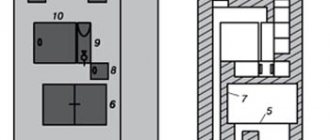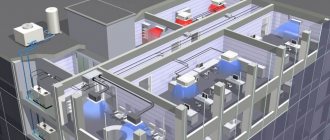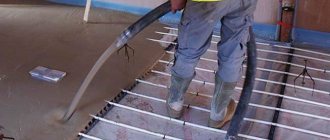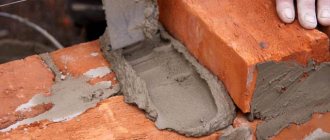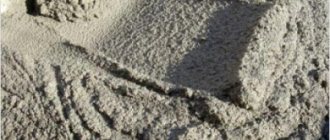Making ceramic tiles yourself is a task that can be completed by anyone who has:
- certain skills;
- required equipment;
- desire to create.
Few people succeed in obtaining a high-quality product on the first try. However, you shouldn't give up on this. And subsequent tiles will be better. They can be used for personal use or sale.
Before production, it is important to decide on technologies. The production of ceramics essentially follows one method. The basis is a plastic mass made of clay. It is used to create tiles of the required sizes. It is then processed.
Making ceramic tiles with your own hands
When creating ceramic tiles, you should adhere to the following technology:
- Raw materials are being prepared. The desired type of clay is selected. Another batch is introduced and the wet mass is preserved.
- A raw material is created. This is a blank made from unprocessed clay. The raw material is thoroughly dried.
- Initial heat treatment is in progress. It is also called biscuit firing. At significant temperature parameters, tiny elements of minerals are combined by melting. This is how they form terracotta. This is high strength ceramics.
- Giving products a decorative appearance. Glaze is applied to the surface, which has been prepared in advance. This is followed by firing to achieve a glossy surface.
So, the work begins with the selection of raw materials. As already noted, the basis here is clay. It can be of different varieties. It is also important to take into account the percentage of its plasticity. According to this parameter, fatty clay is considered the leader. It is suitable for creating any shapes. And the outsider is skinny clay. She has increased fragility and fragility. It is usually recommended to use the middle view. You can also dilute the fatty type with sand or fireclay. This way the clay will not be so refractory and will not burst during firing.
Fireclay clay - instructions for use
The most famous area of application of fireclay clay - in construction - has already been mentioned by us: this is the production of fireclay bricks and the production of masonry compositions for it, but this is not limited to this. Thanks to its unique properties, fireclay is even used for the manufacture of step elements.
And also facing tiles.
Obviously, the use of just such tiles in the lining of stoves and fireplaces is one of the best solutions, but the unique color and texture of fireclay products does not limit its use only to this area. Due to the properties of the material, it adheres perfectly to most stone and concrete surfaces, which makes it very attractive in outdoor decoration.
Instructions for use in the manufacture of such products from fireclay clay are quite simple:
- Fireclay is mixed with fireclay in certain proportions.
- Products are being molded.
- Drying.
- Primary (low temperature) firing.
- Covering the product with glaze.
- Secondary (high temperature) firing.
Most products made from fireclay are also made using a similar recipe, because in addition to construction, fireclay clay is used in many other areas.
Refractory compounds are also widely used in ceramics. In particular, flower pots made of fireclay have a number of advantages over ordinary clay or plastic ones. Flower growers claim that this is the best container for plants.
The main role here is apparently played by the absence of harmful impurities in fireclay. And the durability of such pots is sometimes not limited to half a century.
Obviously, these same qualities make fireclay applicable in household ceramics, in particular in the manufacture of tableware.
Fireclay clay has also found wide application in such a specific form of decorative art as garden sculpture. The unique properties of fireclay make it possible to make even huge sculptures with enviable indicators in terms of durability, precision of detailing and environmental friendliness.
And finally, another interesting area of application for fireclay clay is cooking.
Fireclay stone (culinary fireclay) allows you to obtain the highest quality baked goods, due to the fact that it makes a gas or electric oven something like a natural stone oven or tandoor.
Materials for creating ceramic tiles
You may also come across breeds such as:
- Kaolin. Color: white. It is often used to produce earthenware and porcelain.
- Cement. Needed for the manufacture of cement compositions.
- Brick. It is characterized by low fusibility and is used to create brick products.
- Fire resistant. It has high refractoriness. Copes with melting temperatures up to 1580 degrees.
- Acid resistant. Does not interact with many chemical compounds. Serves as a production raw material in the creation of chemically resistant tableware.
- Molding. It has good ductility and fire resistance. It is often used in the metallurgical field.
- Bentonite. Has powerful whitening properties.
The strength of the prepared tile must be sufficient. To give terracotta shades, you can use natural pigments. Essentially, these are mineral oxides. They are found in some types of clay. This can give a certain shade.
After selecting the raw materials, it is necessary to prepare them. After working with the composition, mixing all the elements in the required proportions, you need to wrap the whole mass in a plastic bag. The task here is to keep air out of this mixture. The clay should be left in this state for some time. This way all the particles of the porous material will absorb moisture.
Features and Benefits
It is better to purchase fireclay clay not from hand or on the market, but from a specialized store. This way, there is less risk of buying low-quality products or those that were stored in inappropriate conditions. The fact is that low air humidity is very important for kaolin, otherwise it loses its unique properties and becomes as unstable to high temperatures as ordinary clay.
The production of fireclay clay is carried out in accordance with the requirements of GOST - 6137−8. According to this document, fireclay must have the following characteristics ;
- humidity - 5% or lower;
- water absorption for low-burnt fireclay is up to 25%, for high-burnt fireclay - up to 10%;
- average particle size - 2 mm;
- fire resistance limit - 1550−1850 ° C.
The material is sold packaged in bags of 5, 12.5, 20 and 50 kg. To lay 10-15 bricks, 10 kg of burnt kaolin is required, which is equivalent to 1 thousand kg per 1 cubic meter. m. Hardening of the solution occurs at air temperatures from +10 to +25 °C. Strengthening continues for 28 days.
Clay can be stored in its original packaging for 3 years from the date of production. Advantages of calcined kaolin:
- Fire resistance, allowing the product to be used for the construction of stoves, chimneys, fireplaces.
- Vapor permeability. The material allows excess moisture to pass through, maintaining an optimal microclimate in the room.
- Good adhesion. Chamotte-based plaster mortar adheres well to various surfaces.
- Safety for humans and the environment due to the fact that the composition contains only natural ingredients.
- Long service life. For several years, the clay does not crumble, crumble or crack.
There are only 2 disadvantages: the difficulty of preparing masonry mortar and the high cost compared to ordinary clay.
Tile molding
Next, you can begin to form the tiles. For comfortable work, it is better to use polyurethane molds. For small batches, gypsum ones are also quite suitable. Forms will help to make smooth products that have the same external data. This requires careful compaction of the clay and its proper distribution according to the existing shape. The same thickness must be maintained over the entire area of the template.
After this work, the workpiece (raw material) must be thoroughly dried. The required degree of drying will be achieved when the tiles lighten and harden. It is very important to be careful here, since the raw material is quite fragile at this stage. But if any defect occurs, molding and drying can be repeated. To do this, the workpiece can be soaked in water.
Checking the quality of the solution
The first testing is carried out before preparing the clay for laying the stove. In order for the solution to be of high quality, you need to accurately determine the fat content of the clay. It will depend on what additional components are required.
How fatty clay is for a stove is determined as follows:
- A small amount of clay - approximately 1 kg - is thoroughly cleaned using one of the methods described and soaked for several days.
- The resulting mass is divided into five equal parts. Nothing is added to the first, the second is mixed with 25 percent of sifted sand, the third with 50 percent, the fourth with 75 percent and the fifth with 100 percent.
- Each part is kneaded separately. If necessary, add a little water until a paste-like structure is achieved. You can determine the readiness of the solution with your hands. If it does not stick, the mixture is considered ready.
- The resulting material is tested for plasticity. Each of the five particles is rolled into a small ball and flattened into a flat cake. All resulting samples are marked with labels indicating the proportions of sand and sent to dry. It will take 2-3 days for the fragments to dry.
- The resulting samples are tested. The cake should not be cracked or collapse when compressed. If you throw it on the floor, it should remain intact. Based on the results of such testing, the correct proportion of sand and clay components is revealed.
You can test for fat content and plasticity in another way. Roll balls about 3 cm in diameter, place each one between two carefully planed boards. Gently, smoothly press on the top one and check the condition of the ball. If it immediately cracks, the composition lacks fat content. If cracks occur at half compression, the mixture is too oily. With the correct proportion of components, most of the sample will flatten, but will not collapse.
A properly formulated solution will not crack immediately after application.
Additionally, oven clay is tested before use. It is better to redo the solution than to waste time building a stove that will crumble. To check, scoop the composition with your hand and rub it with your fingers. A good binder solution should be slippery and oily. Experienced stove makers determine the readiness of the composition by ear when kneading.
A correctly made mixture “whispers” - makes a kind of rustling sound, and lags behind the shovel. You can also dip the trowel into the mixture, pull it out, and then turn it over. If a thick layer sticks, the composition is too greasy, you need to dilute it with sand. If the mortar layer falls away, there is excess sand, you need to add clean clay.
Firing molded tiles
At the next stage of work it is necessary to burn the raw material. Here, all minerals contained in the ceramic mass will be treated at high temperatures. They must fuse with each other. The task is to obtain a monolithic mass. After this procedure, the tile becomes significantly stronger.
Here you can follow an already proven technology - the clay is baked at thermal intervals of 1000–1300 degrees Celsius. Sometimes the readings can be reduced to 850–900 degrees. Such changes should not deteriorate the quality of the product, so first introduce pumice into the raw material composition, but not more than 40% of the mixture. Otherwise, the material will be less durable.
During the initial firing, the raw material shrinks as moisture leaves the composition. This criterion must be taken into account when calculating the final dimensions of the product. It is also important to take into account that at this stage the porosity of the tile structure also increases. In special workshops, it is possible to reduce the number of pores by applying additional pressure.
The porous structure also has its advantages. This will make it more convenient to carry out subsequent decorative processing. The pores will accept some of the outer coating and reduce its spreading.
Fireclay classifications
Ready-to-use crumbs can be used independently, as well as in fire-resistant mixtures.
Initially classified according to the degree of grinding:
- Lumpy (stone-like) fireclay clay or chips. It is ground and added in the production of clinker (colored binding material on a fabric basis), cardboard, paper, heat-resistant plastics, rubber;
- Crushed chips or fireclay dust are added to mortars, plaster, and masonry mixtures. This type of chamotte is used to make masses used for high-quality construction of stoves and chimneys (for example, mortar is a ready-made fire-resistant mixture of clay with various additives; there are more than 20 brands; abbreviated as “MP” (semi-acidic mortar), “MSh” chamotte mortar , and the numbers after the abbreviation indicate the percentage of aluminum oxide on which the quality of the mortar depends). Add water and quartz sand. It does not wear out, does not change under the influence of different temperatures, and can withstand up to 1800 degrees. Built using such materials, stoves and smokers will not lose their shape for a long time, and will not crumble or fall apart.
Lumpy or stone-shaped chamotte is solid and does not contain additives. Usually used by industry. In everyday practice, crushed fireclay chips are used, regulating its qualities with binding elements. Most often it is sand.
Depending on its quantity, the following is created:
- Exhausted fire-resistant mixture with a fifth of sand (20%);
- Smooth (21 - 48%);
- Binder (55%).
The dry composition is dissolved with water and the stoves and walls that are located next to them are plastered and also warmed up.
High fire resistance is due to the presence of aluminum oxide. Based on its quantity, they are distinguished:
- Highly basic fireclay (40%);
- Basic (30%);
- Semi-acidic (up to 30%).
Taking into account fire resistance and composition, clay comes in four grades: basic, first, second, third and fourth.
Applying glaze
Your tiles need to be shined. To do this, you can prepare your own special glaze. It may consist of glass, kaolin and tripolyphosphate. These components produce a dust-like powder. It must be mixed with clean water. Other minerals can be added to this mixture. The general list includes about 30 species.
The prepared glaze is applied to the tile using one of three methods (or combinations thereof): spray, brush, or pour-over method.
The coating must harden thoroughly and bond to the terracotta. To do this, it undergoes secondary firing. It is important here that the ceramic mass does not reach a critical value according to temperature data. Otherwise the tile will melt. Glaze will allow you to create unique and elegant artistic solutions.
What is fireclay clay
Most often, even experienced salespeople in large construction supermarkets will not be able to clearly explain what kind of refractory composition you need to take for this or that type of work, and in pursuit of sales figures they will not delve into your problems much. You will understand why there is such a high probability of error a little later, but now – the definitions.
Master class on making designer ceramic tiles
Ceramic tiles, created according to an individual design by hand shaping, always reflect the individuality of the author. Bright or delicate colors of painting, the embodiment of your own decorative ideas will allow you to create a unique piece of decorative and applied art. At a master class in our workshop you will create ceramic tiles of your own design, embody your personal creative ideas and realize artistic plans. Since the dimensions of the tile are 10*10 cm, it can be used in the design of your own space or as a hot stand. Elegant stylistic solutions will allow such an object to fit into any interior.
How long does clay mixture take to harden?
The time for complete drying of fireclay paste in air is 72 hours , inside the brickwork this time increases, it depends on the thickness of the masonry, temperature and humidity of the surrounding air. Petrification of fireclay mortar occurs at 800 degrees Celsius .
Important! Fireclay masonry does not like sudden changes in temperature.
for the first time three days after construction is completed. Use thin, quickly burning logs. The dampers and vents are fully opened during the first fire. Then the stove is dried for a week , burning small portions of wood daily.
Fireclay masonry dries faster than masonry made from ordinary clay-sand mortar and ceramic bricks, but only the firebox is usually made of fireclay. Therefore, the timing of the start of operation of a furnace with fireclay masonry will be the same as the timing of use of a furnace built on clay and lime mortar. In summer, a new stove is heated to maximum after 10-14 days, in winter - after a month .
Difficulties in making tiles by hand
The difficulties of manually producing ceramic tiles lie in the correct preparation of the mass and filling the mold using technology. When drying and firing, flat ceramic products experience stress that is not distributed in the same way as volumetric ones, which often leads to deformation. Selecting the right ceramic mass and following certain technologies will lead to excellent results.
At the master class you will learn about ceramic masses suitable for making tiles, features of molding flat products, possible options for painting and decorating ceramics. You will make your own handmade tiles that will be admired by all. The cost is in the Prices section.
How to fire a stove correctly to avoid cracks
Stove masonry and the layer of plaster on the fireplace tend to crack over time
It is important to distinguish between minor cosmetic defects and real problems that require an immediate call to the stove specialist.
- Hair-thin cracks appear on the seams of the stove during heating and disappear when it cools. Such defects are absolutely not dangerous and do not require intervention. If you really don’t like their appearance, just cover the walls with tiles and the problem will be eliminated.
- Cracks of 1 millimeter or more that appear at the seams between the bricks and do not disappear when the stove cools down indicate an incorrectly selected masonry mortar. The different expansion coefficients of brick and clay cause warping and cracking.
- Large cracks and displacement of bricks are most often caused by overheating of the stove or improper air circulation system in the chimney and firebox. If the “overheating” of the stove is the fault of the owner of the house, then improper heat removal, when some areas become hot while others remain slightly warm, is the fault of the stove master.
- Closed, broken cracks that cross the walls horizontally or vertically at the seams are a sign that not everything is in order with the foundation. This problem can affect both new stoves and old ones that have stood for many years. There is no point in covering up these cracks; the stove needs to be urgently rebuilt before it completely collapses.
Violation of the integrity of the top layer or brickwork occurs for several reasons. In general, we can say that this is the result of the master’s mistakes. With proper selection of bricks, mortar, finishing materials and professional performance of the work, the formation of cracks on the stove, and especially cracks, is unlikely.
Most often, cracking occurs due to the influence of the following factors:
- non-use of the fireplace for a long time, especially in winter (due to sudden temperature changes);
- haste, manifested in the heating of a recently made stove;
- performing masonry using a method that creates large temperature differences in different places of the structure;
- inconsistencies in the thermal expansion capacity of bricks and mortar for laying;
- overheating or using fuel that produces significantly more heat than what the stove is designed for (for example, burning a wood stove with coal).
If the stove begins to crack for such reasons, then it is easy to fix the problem with your own hands. You need to properly seal the cracks, coat the surface - and the job is done.
It is much worse if the stove begins to crack due to an incorrectly made foundation or an illiterate choice of refractory materials. In this case, it will not be possible to simply seal the seams; you will need to lay the entire stove again.
Repairs cannot be delayed because cracks can leak carbon monoxide, which can poison residents. In addition, over time, the cracks increase, the stove can let flames pass through and completely fall apart.
Before properly and reliably caulking the stove, in order to prevent repeated malfunctions, you need to know what can affect the integrity of the stove coating:
- during a long break in heating the house and sudden temperature changes;
- the furnace was laid using low-quality mortar;
- Perhaps the reason is the settlement of the building or foundation. In this case, it will be necessary to carry out major repairs to the foundation, increasing its size and strength;
- after laying the stove, the process of normal drying of surfaces was disrupted;
- when plastering the stove, a low-quality solution was used or a thick or very thin layer was applied;
- Perhaps the reason is faulty ventilation and condensation deposited on the walls of the furnace.

